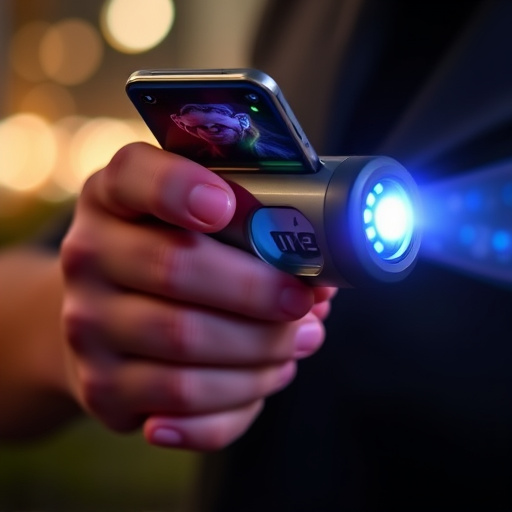Smart phone stun guns utilize high-voltage, low-current electric pulses delivered through metal electrodes to temporarily paralyze muscles and disrupt nerve impulses, offering a precise and efficient self-defense mechanism. Key components include a battery, circuit board, and strategic electrodes, with safety features like fuses protecting against misuse. Proper training, understanding local laws, and following best practices are crucial for safe operation, ensuring these compact, discreet devices serve as effective personal safety solutions.
Discover the science behind the powerful tool that is the smart phone stun gun. This article delves into the electrical current flow, a fundamental aspect of its functionality. We’ll explore how these devices utilize current for disorienting effects, dissect the key components responsible for conducting and controlling it, and highlight critical safety considerations. Understand the intricacies of stun device operation as we break down their technology, ensuring an informed approach to their use.
- Understanding Electrical Current: The Basis of Stun Device Functionality
- How Smart Phone Stun Guns Utilize Current Flow for Disorienting Effects
- Key Components Involved in Conducting and Controlling Current
- Safety Considerations and Best Practices when Using Stun Devices
Understanding Electrical Current: The Basis of Stun Device Functionality
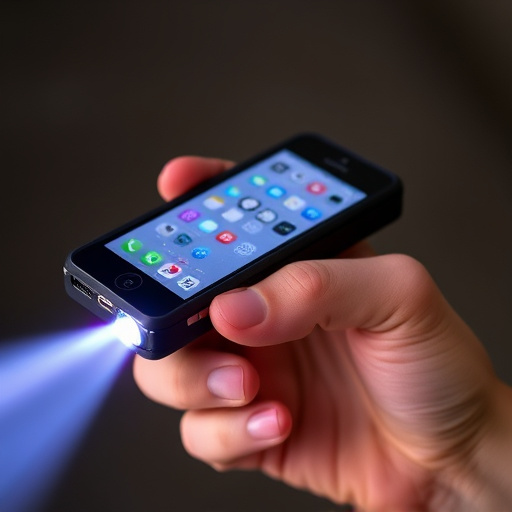
Electrical current is the lifeblood of any stun device, including smart phone stun guns. Understanding how this flow of electrons works is crucial to comprehending their functionality. When activated, a stun gun uses electricity to deliver a powerful shock to immobilize an assailant temporarily. This sudden jolt interrupts the signals between the muscles and brain, causing them to spasm uncontrollably.
The smart phone stun gun’s design focuses on compacting this advanced technology into a portable device. Inside, a high-voltage electrical circuit generates a strong electric current that flows through specialized metal prongs or electrodes. These electrodes make contact with the target, completing the circuit and allowing the electric current to pass through, thereby achieving the stunning effect.
How Smart Phone Stun Guns Utilize Current Flow for Disorienting Effects
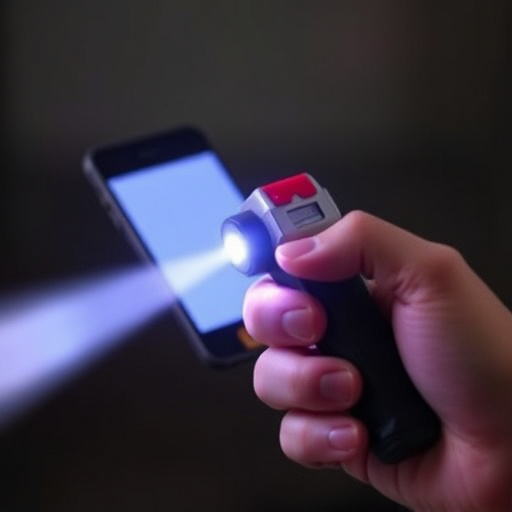
Smart Phone Stun Guns utilize electrical current flow as their primary mechanism for creating disorienting effects. These devices emit a high-voltage, low-current electric pulse through a metal probe or contact points, causing temporary muscle paralysis and sensory disruption in the target. The current disrupts nerve impulses in the affected area, leading to a loss of balance, coordination, and muscular control. This sudden immobilization can provide users with valuable time to escape dangerous situations.
Unlike traditional stun guns that rely on more powerful but less precise electrical outputs, Smart Phone Stun Guns integrate advanced circuitry and microprocessors to optimize current flow. They typically deliver short, intense pulses of electricity, minimizing energy waste while maximizing the impact on the target. This efficiency, coupled with their compact size and ease of use, makes these stun guns a popular choice for personal safety among individuals who prefer a discreet yet effective self-defense solution.
Key Components Involved in Conducting and Controlling Current
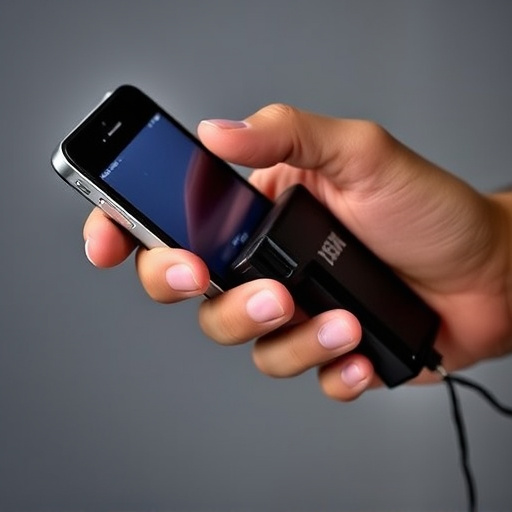
In a smart phone stun gun, several key components work together to control and conduct electrical current effectively. The battery serves as the primary power source, delivering a high-voltage charge that’s meticulously regulated by the circuit board. This board acts as the brain of the device, ensuring the correct amount of current flows through the electrodes when activated.
The electrodes, typically made of conductive materials like metal, are designed to make contact with the target and complete the circuit. Their strategic placement and material composition play a crucial role in determining the stun gun’s effectiveness. Additionally, safety features such as fuse or break switches are integral to protecting both the user and the device from excessive current draw or short circuits, ensuring safe operation.
Safety Considerations and Best Practices when Using Stun Devices
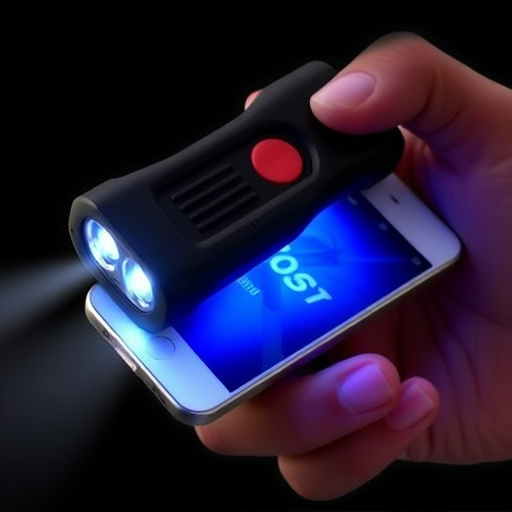
When using stun devices, such as a smart phone stun gun, safety considerations are paramount. It’s crucial to understand that these devices deliver high-voltage electrical pulses, which can cause temporary incapacitation but also pose significant risks if misused or mishandled. Always ensure proper training and knowledge about the device’s operation before employing it for self-defense. Familiarize yourself with local laws and regulations regarding stun guns to avoid legal repercussions.
Best practices dictate that users should never point a stun device at anyone unless absolutely necessary for self-defense. Maintaining control over the device is essential; hold it firmly and target specific areas like legs or arms, away from vital organs. After use, store the stun gun securely in a designated location, keeping it out of reach of children and unauthorized individuals. Regularly inspect and maintain your stun device to ensure optimal functionality and safety.
Smart Phone Stun Guns leverage electrical current flow as their core functionality, utilizing precise currents to achieve disorienting effects. By understanding how these currents operate and the key components involved in conducting and controlling them, users can ensure safe and effective deployment. Adhering to safety considerations and best practices is paramount when using stun devices, ensuring their reliability for personal protection without unintended harm.
